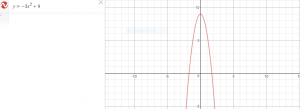this week I math we learned to how to use Sin law to find either a certain angle of a triangle or a side length. In order to use Sin law you at least three clues, of those three clues you need to have an angle and the corresponding side length of that angle.
below is a triangle that you would be able to use Sin law with
The angle of “C” is not directly given however, you can determine the angle subtracting the other two angles from 180 as all angles in a triangle have to add to
you now know that angle C is . With this information, you can find either side a or side b with the formula




